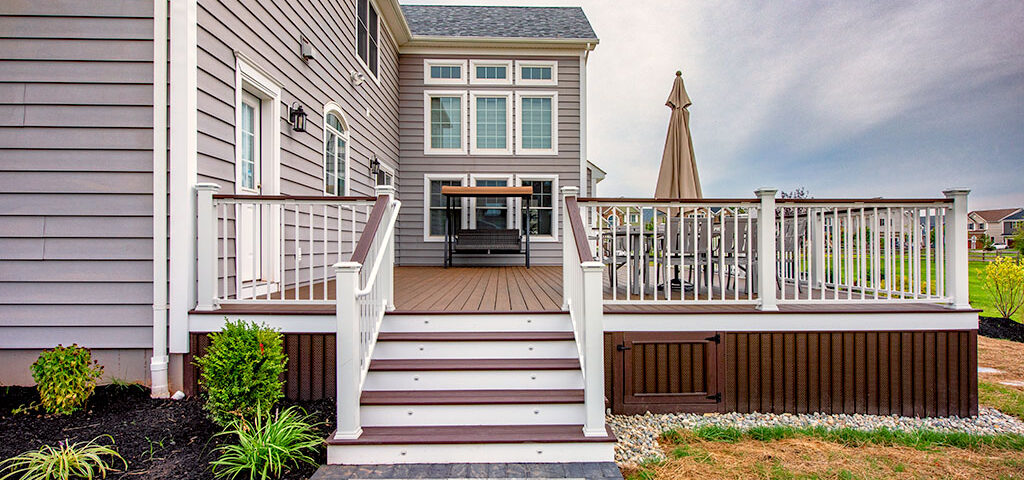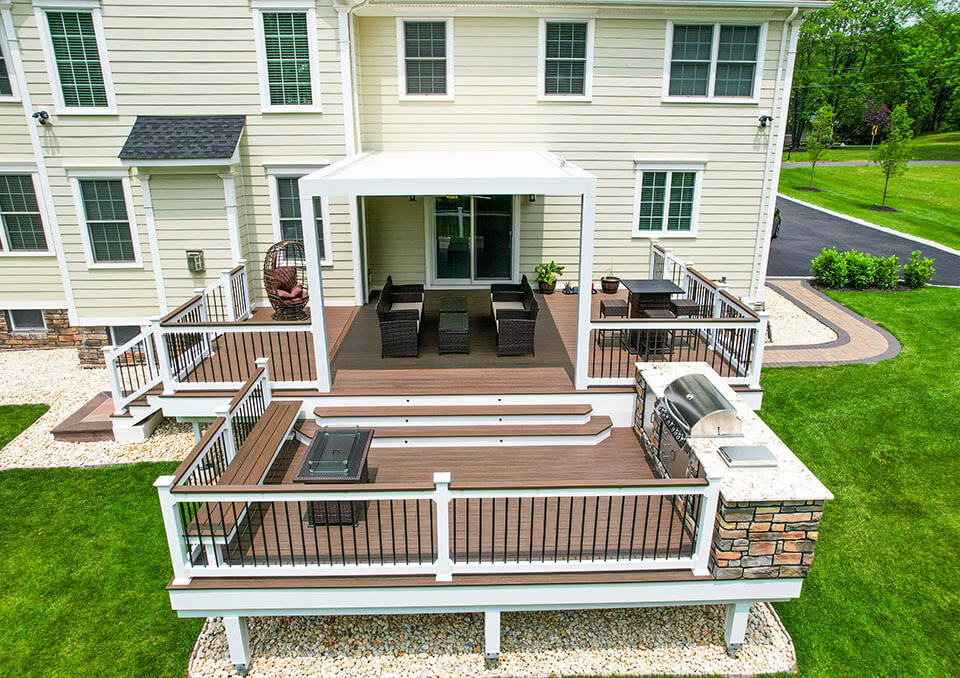How well do you know your deck? The truth is that a deck should really be thought of as a system instead of a single structure. There are many different architectural and support features that keep a deck secure, stable, and beautiful. It's our pleasure to give our clients some deck education here at Royal Deck in Naperville, Illinois. We've been building decks for homes all throughout Chicagoland for years. Take a look at the basic anatomy of a deck.
Footing
The footing is what sets the stage for your deck. A new deck construction usually begins by pouring concrete footings. Next, post anchors are attached to the footing.
Posts
Posts are attached to deck footings. They'll hold your support beams away from the ground. This step cannot be skipped because posts ensure that you're getting good airflow under your deck to prevent rot and moisture damage.
Beams
Placed horizontally, beams hold up your deck framing. These serve as the main structural supports for the entire deck. It's important to use quality lumber that's the right size for this step of a deck build.
Joists
A frame also needs joists. Joists help to support the deck boards. They are placed vertically to run perpendicular to the deck boards.
Ledgers
A deck's ledgers are what anchor the deck to a house. They also serve as supports for one side of your joists. Something called a header joist must be used for the other side of the joists.
Deck Boards
This is what most people think of when they picture a finished deck. Deck boards are the boards you walk on when you step on a deck. They can be made from all types of wood and composite materials. When using woods, it's important to allow deck boards to acclimate to the local climate to prevent cupping and buckling after installation.
Fascia Board and Rim Joist
A deck fascia board is a board that runs around the entire perimeter of a deck. It is like a seal that gives a deck a polished, protected look. Fascia boards are placed over a part of a deck that's called the rim joist cover. The rim joist cover is the deck's perimeter joist.
Drainage System
It's important for water to shed naturally between deck slats. This happens automatically with most decks. However, you may need to look into a deck drainage system if your home's terrain doesn't allow for this to happen.
Hidden Fasteners
Hidden fasteners allow you to secure your deck without any visible screw heads ruining the aesthetic of your deck. However, you're not out of luck if you already have a deck with visible fasteners. In many cases, a deck contractor can build custom caps made of wood or composite material to conceal your screw heads.
Railings
Railings aren't always necessary when a deck is low to the ground. In addition to providing safety, deck rails also help to set the architectural tone for a deck. Attractive options like wood, composite, and metal help to finish off the look of a deck. A Chicagoland deck contractor can help to ensure that your new railings follow all ADA handrail requirements.
Stairs
Stairs are considered part of a decking project when building an elevated or multi-tier deck. A good deck contractor in Illinois will provide insights on the best way to work stairs into a deck design. Poorly placed stairs can actually steal usable space from your deck. In addition, picking a stylish stair riser and stair tread can add beauty and value over simply painting the entire staircase the same color.
Skirting
Skirting is the final finishing touch on a slightly raised deck. If there is a gap between your deck and the ground, skirting covers the gap. Deck skirting can be made of solid wood, wood lattice, composite, faux stone, metal, and other materials.
Build Your New Deck in Illinois
If you're looking for a deck contractor serving the Chicago suburbs, Royal Deck is ready to show you just how amazing your new deck design can be. We specialize in beautiful, durable decks designed for the local climate. Contact Royal Deck of Naperville for a quote today.


